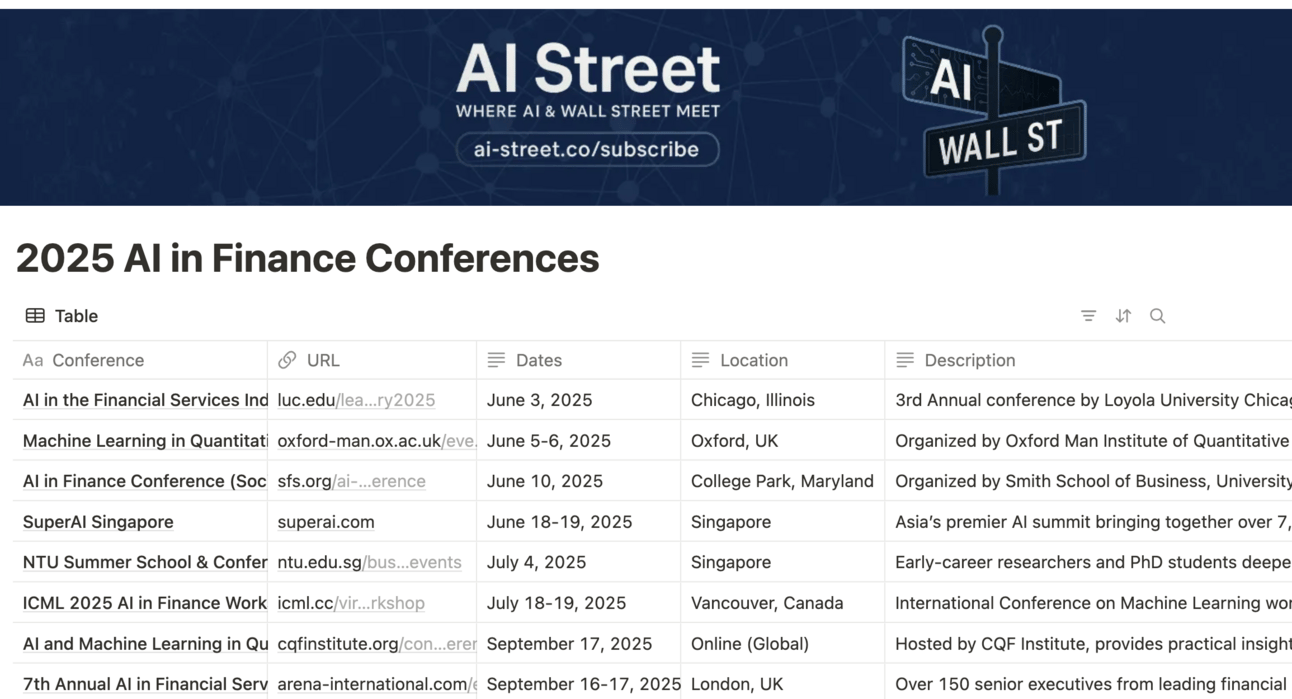COMPUTE
GPU as a Service

A gratuitous Seinfeld reference
It’s getting harder to track all the ways AI is touching Wall Street.
You can invest in AI models themselves.
Or back the chipmakers.
Or finance the data centers.
Or bet on vibe coding platforms.
Or let AI invest for you.
… Or potentially trade “compute” itself, turning GPU capacity into a liquid asset like oil or electricity.
Silicon Data, a market-intelligence firm that focuses on the cost of graphics processing units, created what it says is the first daily index to track the specialized chips vital to powering artificial intelligence.
The company’s Silicon Data H100 Rental Index tracks the hourly cost of renting a GPU, according to founder and Chief Executive Officer Carmen Li.
“There is zero transparency now for GPU costs,” Li told Bloomberg. “This is the first step, to help market participants gain transparency into the convoluted world of AI costs.”
Graphics processing units are the workhorse for training AI models. The chips are designed to handle thousands of tasks simultaneously, a concept known as parallelism. A data center may use hundreds or even thousands of these processors, which can cost thousands of dollars.
I tried looking a couple of months ago for data on GPU rental costs and it was oddly hard to find. The best resource I found was this post “How the GPU Rental Bubble Burst.”
This is strange given how closely investors track Nvidia as a proxy for the development of AI (The company beat earnings estimates yesterday). You’d think that rental prices for Nvidia’s chips would be another proxy.
Silicon Data tackles pricing transparency. Compute Exchange, launched this year, runs auctions that match buyers and sellers of compute.
Both firms count proprietary trading firm DRW among their investors. DRW founder Don Wilson has a history of bringing new markets to the mainstream, like crypto and VIX options. Wilson thinks that the market potential is massive:
"The total dollars spent on compute will, over the next 10 years, exceed total dollars spent on oil. Obviously oil is the largest commodity right now, so I believe it will be displaced by compute," Wilson told the WSJ.
At first, it seems weird that compute would have a trading market for it. But then again, it was weird to think Bitcoin would have a futures market. And we have one today.
James Corcoran, head of AI at STAC, said in an email the idea behind Compute Exchange is solid, modeled on commodity and financial markets. “If there’s a market for corn, why not compute?”
Still, he questioned how defensible the platform is, citing two risks: a potential oversupply of compute and competition from cloud giants offering similar features.
Corcoran called Silicon Data’s approach promising but early. Its success, he said, depends on whether compute remains scarce enough to become a true tradable asset.
Most commodities are consumed once—electricity included—whereas GPU hardware can be re-rented until it depreciates. This builds in scarcity.
Eugene Cheah, CEO of Featherless AI and the author of the GPU rental bubble burst story above, told me GPU rental prices continue to trend downward, and that demand for inference may temporarily reverse that trajectory, but longer-term trends point lower.
“Advancement in GPU will bring price down,” Cheah said. “Ironically, the biggest threat to H100 GPU rental prices is Nvidia themselves.”
Takeaway: If chips are the new oil, then firms like Silicon Data and Compute Exchange are trying to build the spot and futures markets. The question is whether scarcity will make it worth trading.
More:
How Silicon Data is Bringing Transparency to the GPU Market (Founders Press)
A Price Index Could Clarify Opaque GPU Rental Costs for AI (IEEE Spectrum)
GPU Rental Prices Vary More Than You Think — Even Across U.S. Regions (Carmen Li)

BANKS
JPMorgan on How it Uses AI Across the Firm
The largest U.S. bank by assets detailed how it’s using AI at its recent investor day. (Business Insider)
$18B Tech Budget
JPMorgan is spending a record $18 billion on tech this year, up $1B YoY. Much of that is going into AI, ML, and cloud infrastructure.
200K Employees, 100+ genAI Tools
Its in-house genAI platform has been rolled out firmwide. Early users report saving several hours per week by offloading low-value tasks.
Consumer Banking
Call centers now use AI to anticipate questions. Combined with automation, this cut servicing costs by ~30%. A 10% headcount reduction is expected in ops. Mobile app personalization is boosting engagement by 25%.
Asset & Wealth Management
Tools like Smart Monitor reduce research time by 83%. Connect Coach surfaces tailored advice and action items for 7,600 wealth advisors in real time. Advisory productivity is up 3.4x.
Investment Banking & Payments
Over 175 AI use cases are live. Onboarding costs are down 40%. AI is improving risk analytics, client insights, and transaction routing.
“We were early movers in AI, but we’re still in the early stages of the journey.”
Takeaway: At JPMorgan’s scale, even $18 billion doesn’t make firmwide change easy. CEO Jamie Dimon has been one of AI’s biggest cheerleaders. In the coming quarters, we’ll see whether the bank’s AI bets are setting it apart.
Goldman’s CIO: In the Future, AI Agents Will Have Managers
Goldman Sachs CIO Marco Argenti says AI isn’t replacing people and that humans will use and manage AI.
“The way you scale those agents is that they are outsourced to other agents—the same way you have managers,” Argenti said. AI agents will operate in layers, coordinating and delegating just like teams do today. (Yahoo)
Two-thirds exposed: About 67% of Goldman’s workforce already uses some form of AI.
Not a threat, a shift: “This is just another transition. Like before Excel, after Excel,” Argenti said. “It elevates your work rather than doing repetitive tasks.”
Agent lifecycle: Underperforming agents aren’t a risk—they’re retrained or shut down. “You put them back to the drawing board and retrain them.”
Displacement is real—but temporary: “You might have some job displacement at the beginning, but then those industries tend to create a lot of new jobs.”
Takeaway: This seems more blueprint than any sort of upcoming reality, though I do get a kick out thinking about an AI agent getting at their annual performance review:

You could probably guess my age by the era of my memes..

INVESTING
Norway’s $1.8T Wealth Fund: Use AI or Get Left Behind
Nicolai Tangen, CEO of the world’s largest sovereign wealth fund, says AI is no longer optional for his 670-person team. At Norway’s $1.8 trillion fund, employees who don’t integrate AI into their workflow won’t be promoted—or hired. The push is about speed, scale, and staying competitive in global markets.
Mandate from the top: “It isn’t voluntary to use AI,” Tangen told Bloomberg. “If you don’t use it, you won’t get a job.”
Efficiency impact: Internal surveys show a 15% productivity gain in 2024. Tangen expects another 20% in 2026.
Tools in play: Claude (Anthropic), Microsoft Copilot, Perplexity, Cursor, OpenAI Deep Research, and Google AI—all now embedded across research, trading, and ops.
Workflow automation: AI now parses ESG filings and 50-page proxy statements to guide voting decisions. The system predicted—with 95% accuracy—how the fund would vote on Elon Musk’s $56B pay package.
Cultural shift: There’s now a 6-person “AI enabler” team, 40 internal ambassadors, and 300 employees coding with AI assistance.
Limits remain: Trading decisions and hiring still require human oversight. No classified info in prompts. Two-person review required for code deployments.
Tangen says firms not adopting AI are already 50% behind. “They’ll never catch up.” (Bloomberg)
Takeaway: Like JPM’s Dimon, Norway’s Tangen is betting big on AI. If it’s really the productivity elixir, we should see it in results over the next few quarters.

CALENDAR
Upcoming AI + Finance Conferences
I’ve put together a calendar of upcoming AI and finance conferences. Click on the image below to access links and event descriptions. Let me know if I’ve missed any and I’ll add them. Thanks!

DIRECTORY
AI Tool Directory

I’ve put together a database of 50+ AI and investing tools categorized by use case, where you can search, for example, by due diligence or AI agents or earnings data. Each company card has a short description and a link to the platform.
I did my best to add all relevant companies, but I know there are probably more out there. If you know of any that should be included, please reach out: [email protected].
I plan to add more data on each company, but I wanted to see what interests readers most first. So please reach out with comments!
To access this (free) database, please recommend AI Street to someone you think will get value from reading AI Street. (Please don’t send this to a burner email; I can see where the referrals go 🙂)
Share the link below and after they join, you’ll receive the database by email.


